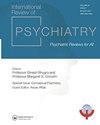外科教育中艺术与人文课程的评估:系统回顾
IF 3.7
4区 医学
Q1 PSYCHIATRY
引用次数: 0
摘要
摘要目的本系统综述旨在了解外科教育中艺术和人文学科项目的结果。方法:作者检索Medline ALL (Ovid)、Embase.com、Web of Science和Academic Search Ultimate,检索有关外科教育中被评估的艺术和人文学科的文章。检索确定了1,282个标题和摘要,其中55个进行了独立的全文审查。作者确定了10篇符合纳入标准的文章,并从中收集和分析了数据。结果大多数研究认为医学生是学习者(6/10;60%)。在一半的研究中,反思性写作是艺术和人文活动(5/10;50%);剩余研究中基于电影、文学或社交媒体以外的电影、视觉艺术的活动(5/10;50%)。大多数研究(8/10;80%)采用非对照、非随机设计。作者将5项研究(50%)归类为Kirkpatrick等级1,4项(40%)为等级2,1项(10%)为等级3。结论将艺术与人文学科整合到外科教育中,除了可以提高手术技能的习得外,还可以提高学习者的反思和同理心水平。对这些课程进行更严格的评估,将澄清艺术和人文课程对外科学习者的影响。关键词:医学教育视觉艺术表演艺术文学反思性写作电影致谢dr . Chisolm是Paul McHugh人类繁荣计划的主任,她的工作得到了该计划的支持。披露声明作者未报告潜在的利益冲突。本文章由计算机程序翻译,如有差异,请以英文原文为准。
Evaluation of arts and humanities programs in surgery education: a systematic review
AbstractPurpose This systematic review seeks to understand what outcomes have been reported for arts and humanities programs in surgery education.Methods Authors searched Medline ALL (Ovid), Embase.com, Web of Science, and Academic Search Ultimate to identify articles on evaluated arts and humanities programs in surgery education. The search identified 1,282 titles and abstracts, of which 55 underwent independent full-text review. The authors identified 10 articles that met inclusion criteria, from which they collected and analysed data.Results Medical students were the identified learners in most studies (6/10; 60%). Reflective writing was the arts and humanities activity in half of the studies (5/10; 50%); activities based on film, visual art other than film, literature, or social media in the remaining studies (5/10; 50%). Most studies (8/10; 80%) featured a non-controlled, non-randomized design. Authors categorised 5 studies (50%) as Kirkpatrick Level 1, 4 (40%) as Level 2, and 1 (10%) as Level 3.Conclusion Integration of the arts and humanities into surgery education may promote increased levels of learner reflection and empathy, in addition to improved acquisition of surgical skills. More rigorous evaluation of these programs would clarify the impact of arts and humanities programs on surgery learners.Keywords: Medical educationvisual artsperforming artsliteraturereflective writingfilm AcknowledgementsDr Chisolm is the Director of the Paul McHugh Program for Human Flourishing, through which her work is supported.Disclosure statementNo potential conflict of interest was reported by the author(s).
求助全文
通过发布文献求助,成功后即可免费获取论文全文。
去求助
来源期刊

International Review of Psychiatry
PSYCHIATRY-
CiteScore
5.10
自引率
0.00%
发文量
85
期刊介绍:
The International Review of Psychiatry is the premier review journal in the field with a truly international authorship and readership. Each bimonthly issue is dedicated to a specific theme relevant to psychiatry, edited by recognized experts on the topic, who are selected by the Editors and the Editorial Board. Each issue provides in-depth, scholarly reviews of the topic in focus. The Journal reaches a broad international readership including clinicians, academics, educators, and researchers who wish to remain up-to-date with recent and rapid developments in various fields of psychiatry. It aims to be of value to trainees by choosing topics of relevance to career development, which are also suitable for clinicians for continuing professional development.
 求助内容:
求助内容: 应助结果提醒方式:
应助结果提醒方式:


